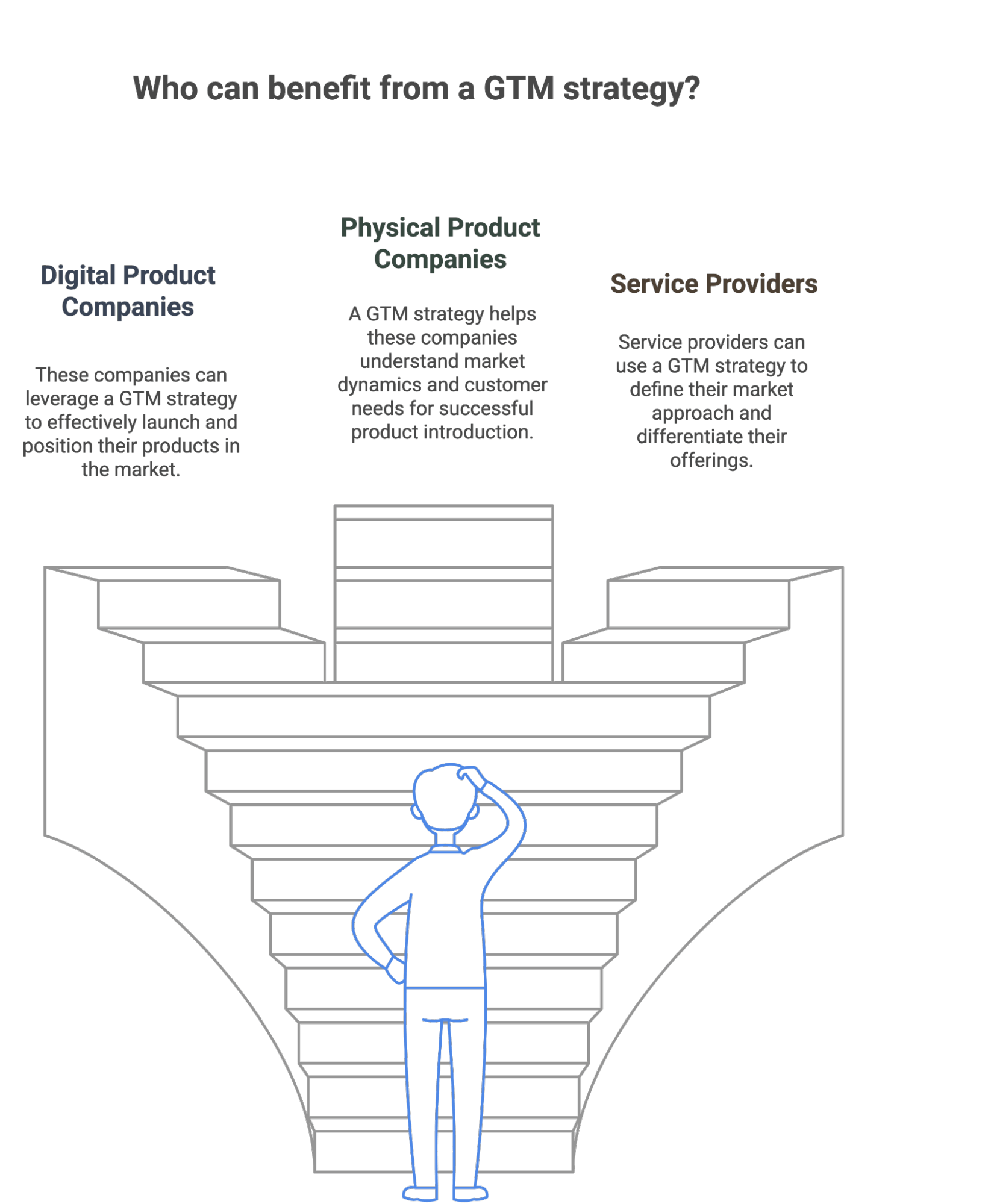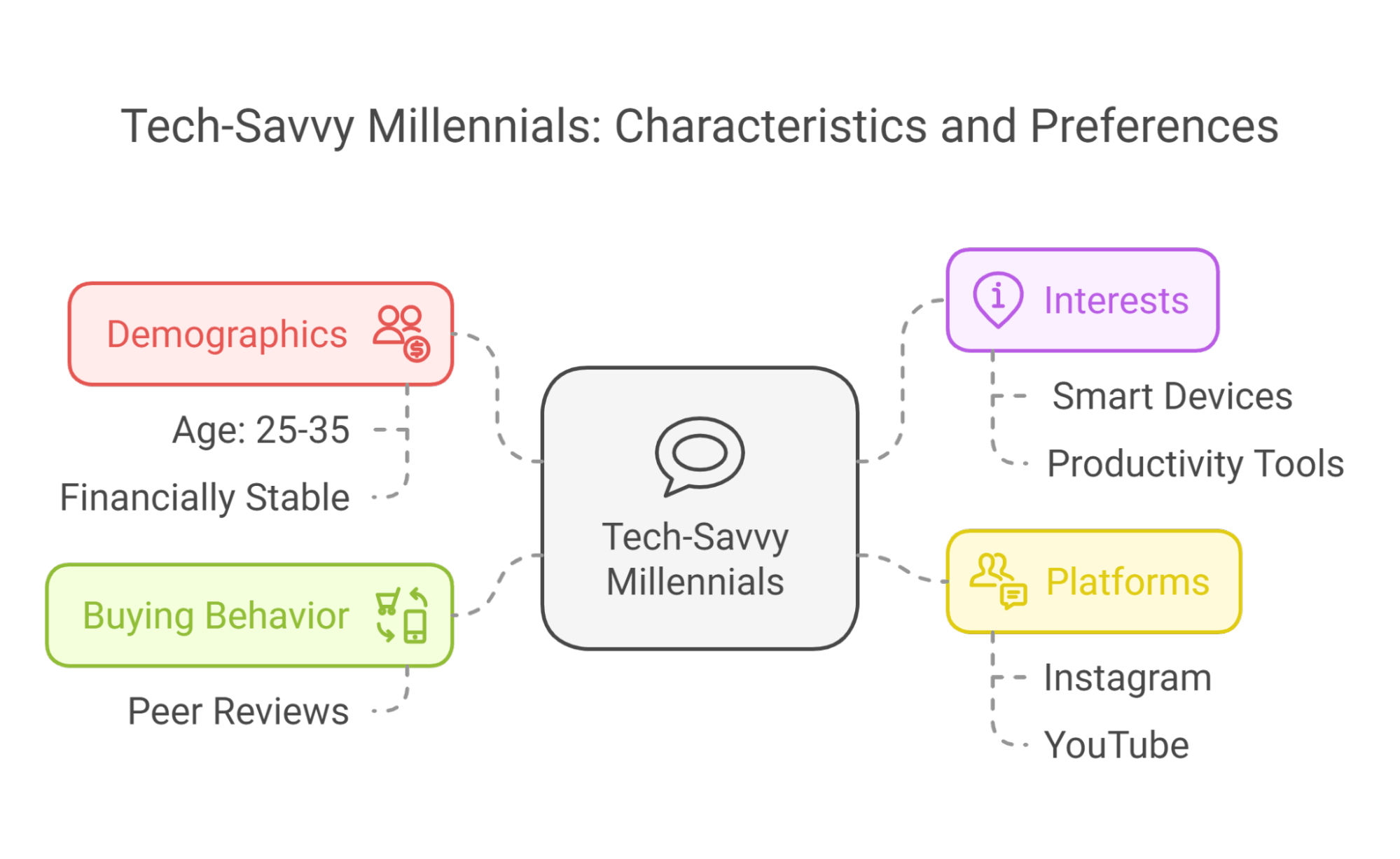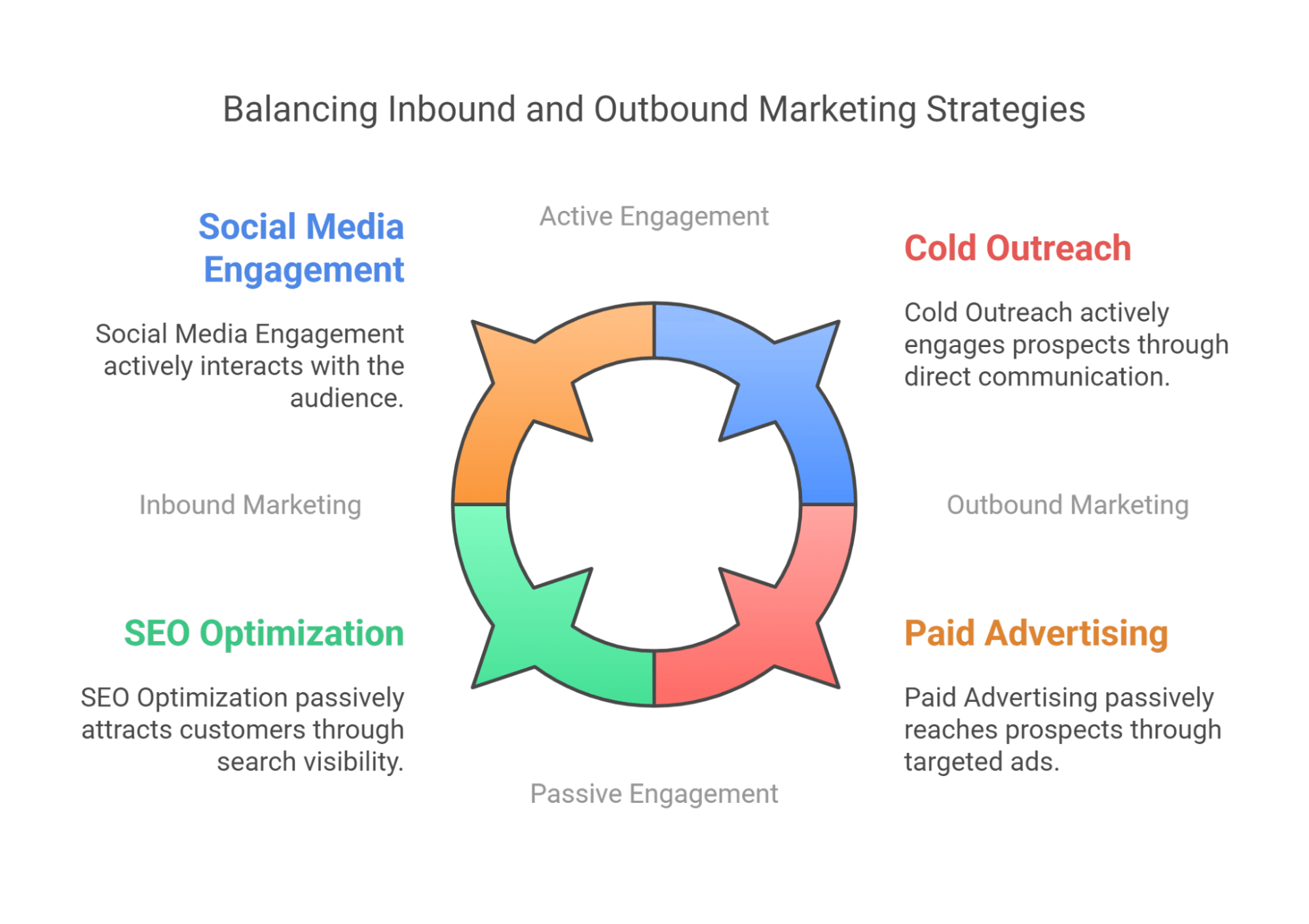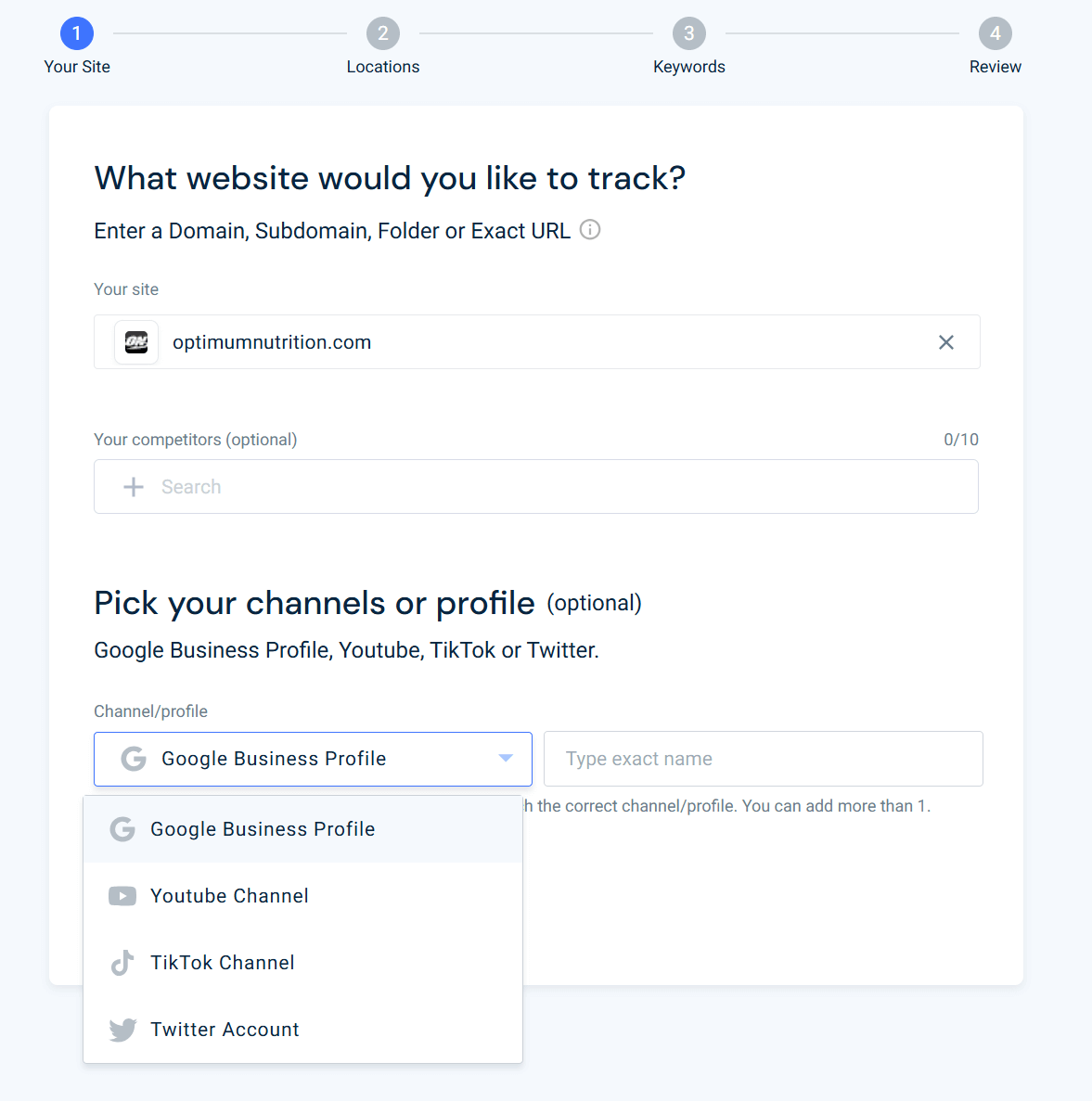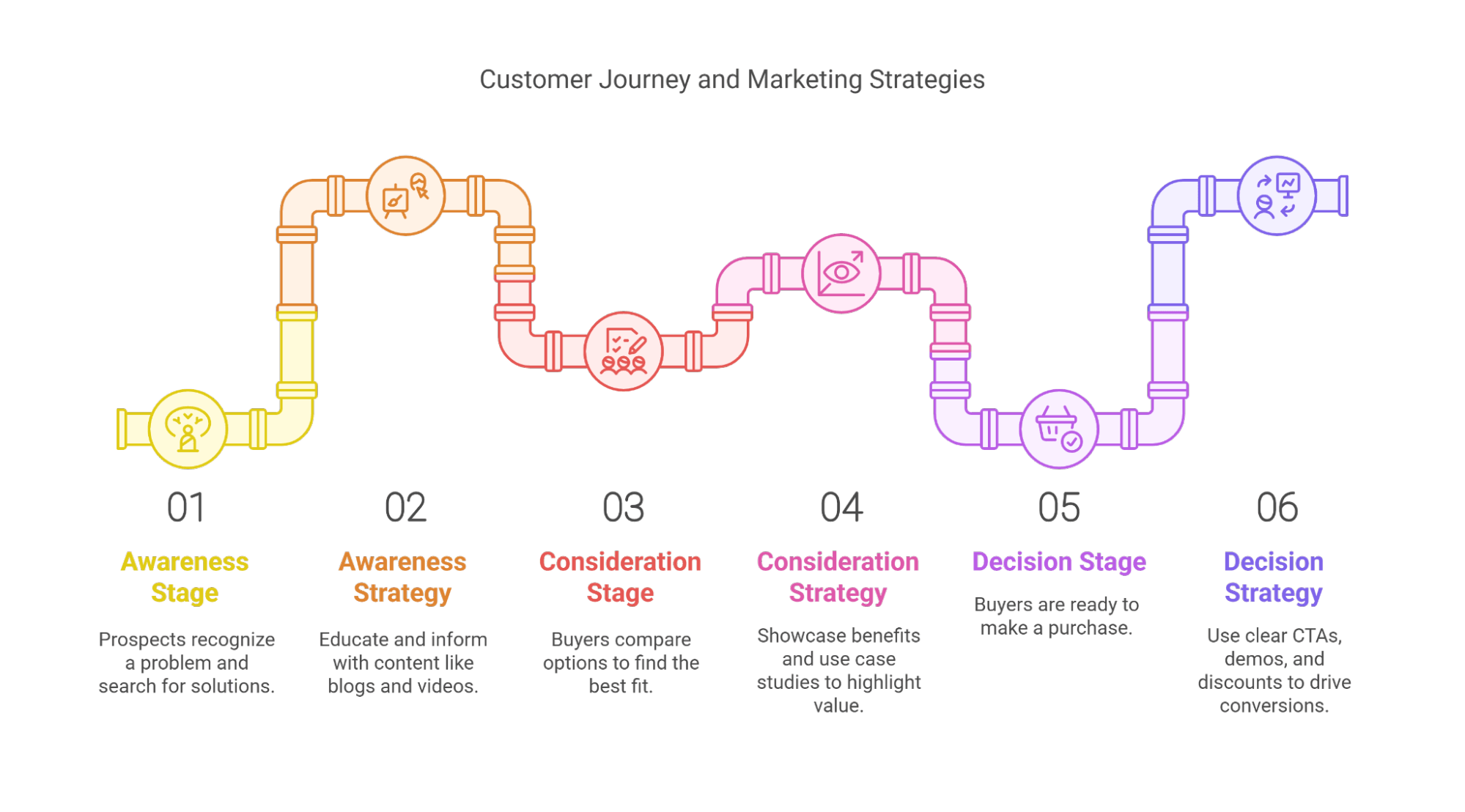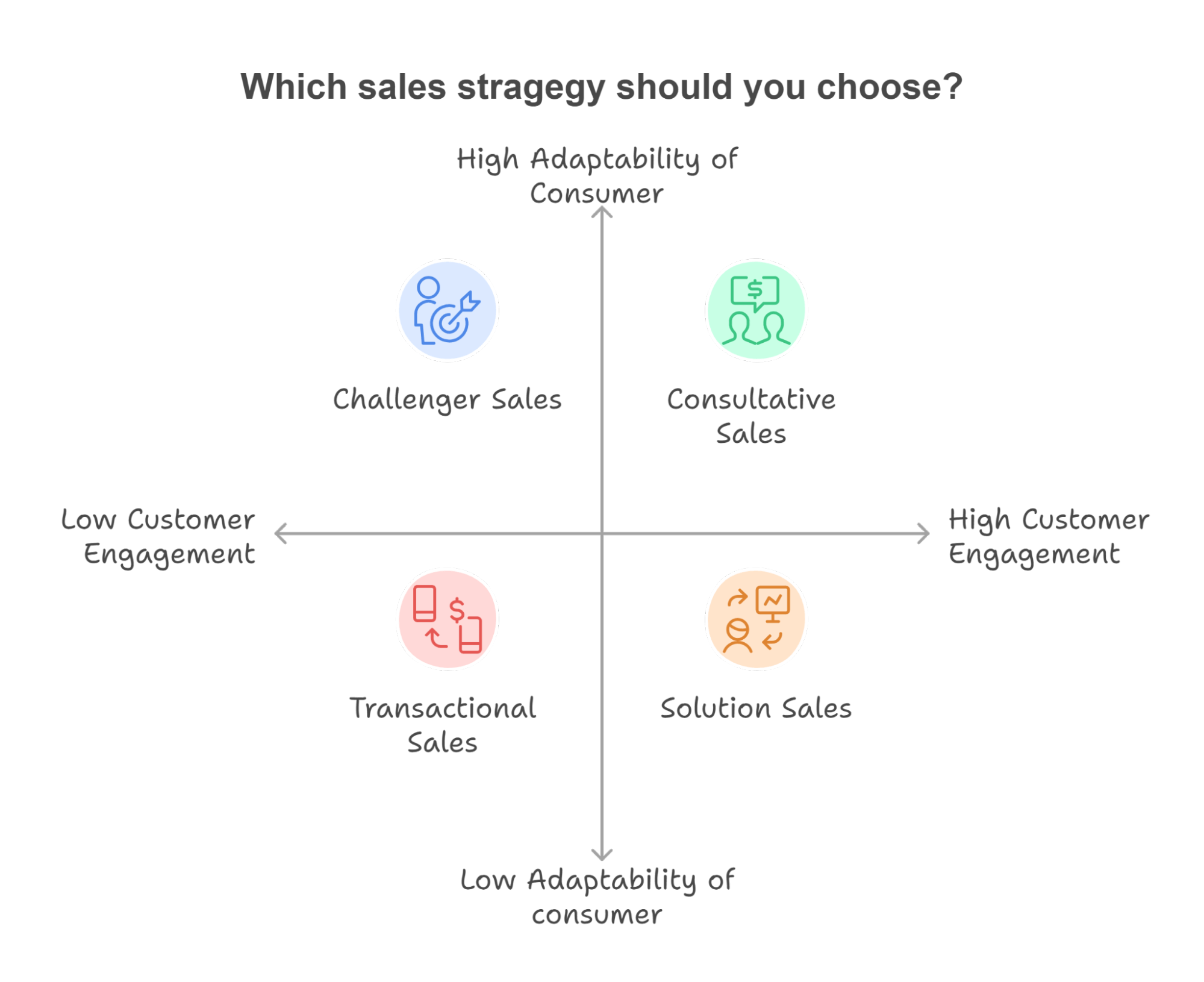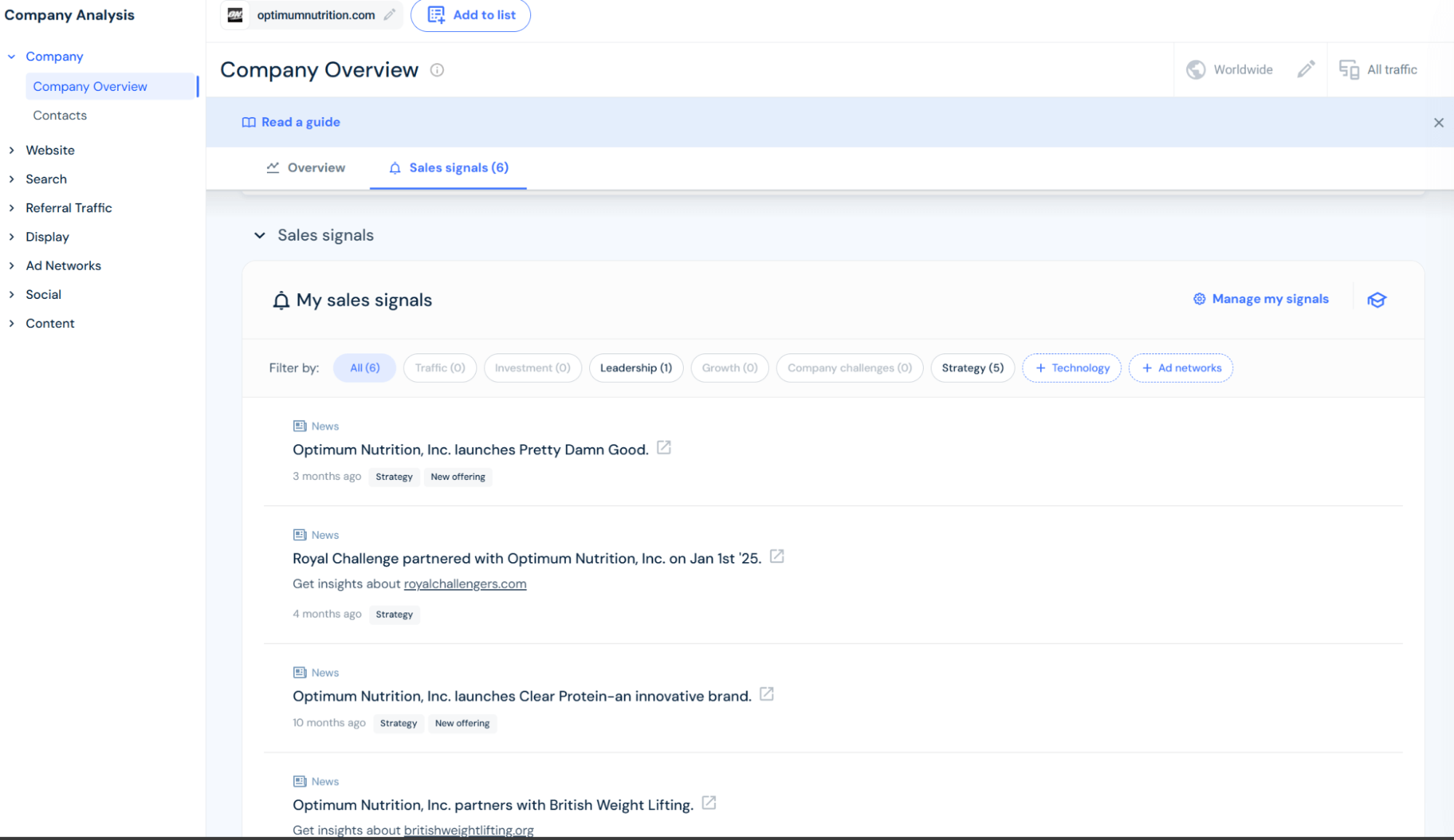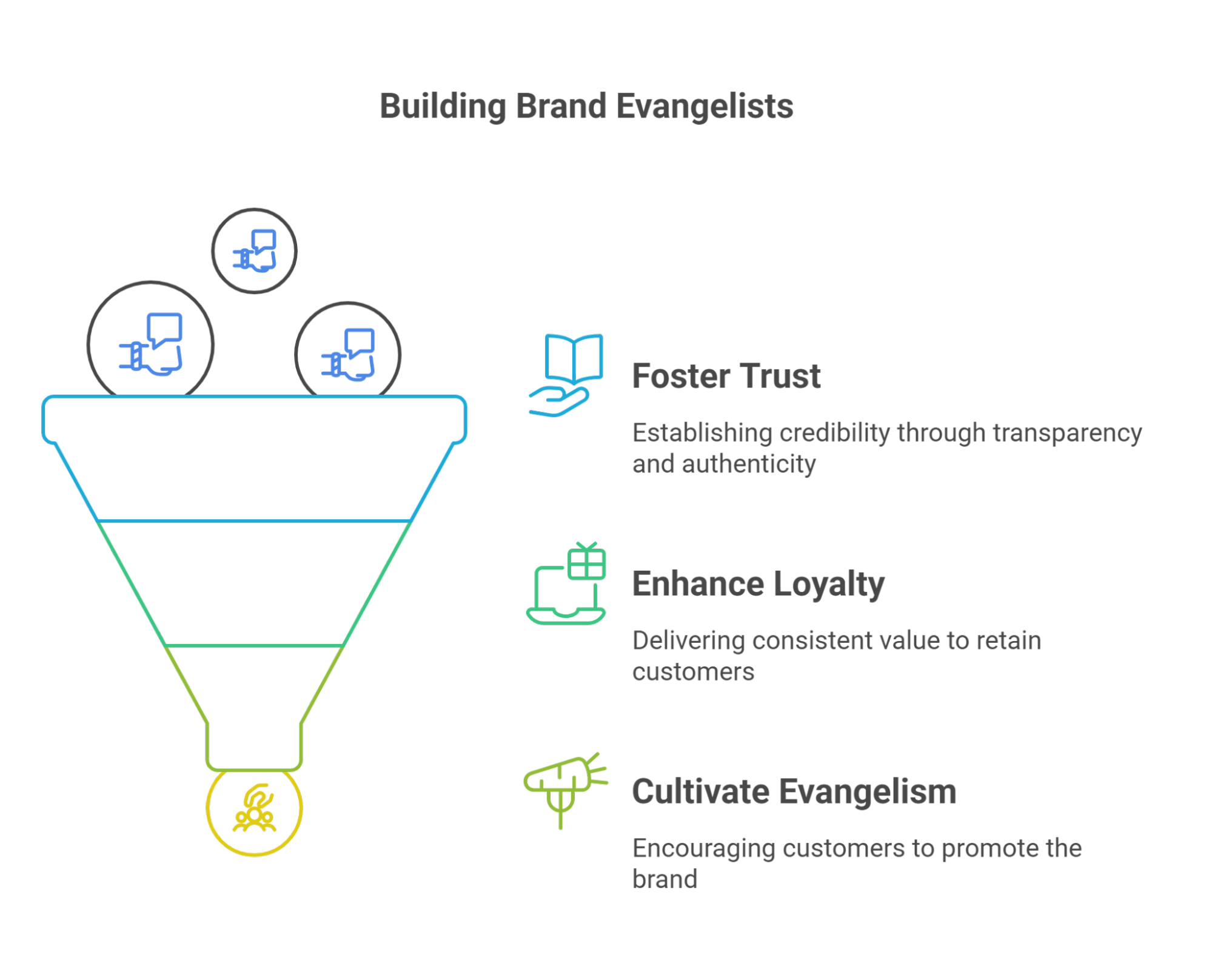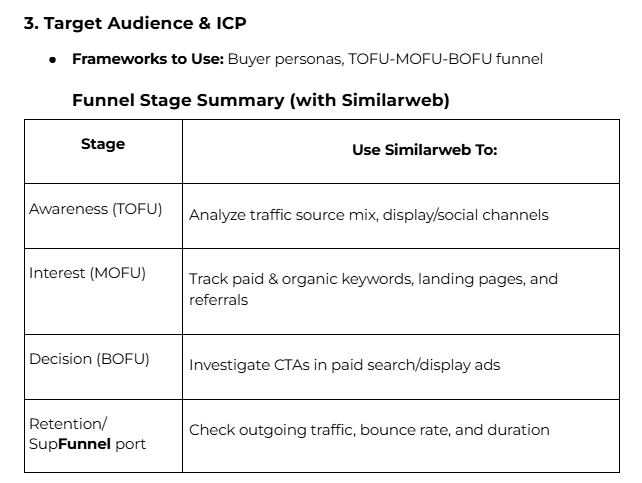What is a go-to-market strategy? GTM Trends + Templates + Case Studies

You might already know that over 78% of startups fail in the first year because of mismanagement of funds, ineffective marketing, skewed product market fit, and superficial research. This statistic not only accounts for new businesses but also the ones backed by venture capital or institutional debt.
You might also believe that in 2025, an AI-generated GTM strategy will give you a decent action plan because it understands all aspects more deeply.
But what separates a new-age successful product or service from one that goes unnoticed? The answer lies in a bespoke Go-to-market strategy (GTM strategy).
In this article, we will dive deep into what is the purpose, key elements, foundation, and methodology of crafting a winning go-to-market strategy.
All these will be backed by case studies and finally, end with a free template that will help entrepreneurs and marketers such as yourself use Similarweb’s digital intelligence to beat those generic AI models and get you working on your first strategy.
Without any further ado, let’s answer the first question…
What is a Go-to-market strategy?
A go-to-market (GTM) strategy is a structured plan that helps businesses launch new products or services and enter new markets effectively. It focuses on identifying the right audience, crafting tailored messaging, and strategically timing the launch, among other elements.
The key components of a GTM strategy include:
- Target Market Definition: To whom are you selling?
- Marketing and Sales Plan: How are you going to generate demand?
- Problem-Solution Fit: What pain points are you addressing?
- Stakeholder Alignment: How will you ensure that your teams are working cohesively?
A well-executed GTM strategy helps MSMEs by tackling all problems that contribute to failure after the ideation stage. You might have a solid product, but minimizing risk, optimizing resources, and understanding the market are essential.
Pro Tip: With today’s dynamic markets, it is never a bad idea to revisit your strategy periodically. A go-to-market (GTM) strategy is vital for new business adventures and long-established ones equally.
Why is a Go-to-Market Strategy Important?
It serves as a roadmap to ensure that every aspect of the product launch (or relaunch) is optimized for efficiency, maximizing revenue, and consequently success.
These are a few ways how a GTM strategy can ensure success
-
Helps you target the right audience
By identifying, classifying, and reaching out to the right audience, you can ensure that your marketing and sales efforts are not wasted on uninterested or irrelevant consumers.
According to McKinsey, companies that segment their Total Addressable Market (TAM) are 60% more likely to hit their revenue goals.
-
Optimizing marketing and sales efforts
A GTM strategy not only helps you create personalized and highly targeted campaigns with the data collected (more on this later) but also aligns the marketing and sales teams ‘ efforts.
Salesforce says companies with coherent marketing and sales see up to a 38% increase in sales conversions.
-
Mitigating risks in new market ventures
Inherent risks such as poor timing, unforeseen competition, and lack of actual demand can be muffled with the help of a robust GTM strategy.
At least 4 out of the top 10 risks in 2024 can be mitigated with a GTM strategy.
But…Who needs a GTM strategy?
Contrary to popular belief, it is not limited to any one type of company (think: digital or physical product offering) but applies across various industries and business sizes.
- Startups, Entrepreneurs, and Solopreneurs who are launching a new product and need to find the product market fit that chimes with their target audience.
- Established companies that are launching new products that are either going into new markets or existing ones, to maintain their branding.
- Businesses moving into new markets. For example, a fashion brand going international where cultures and spending capacity differ.
- Companies and small businesses that are rebranding or pivoting completely. I am sure Jaguar (automotive) had a GTM strategy with their overhaul.
- Businesses going through strategic changes internally, like mergers and acquisitions, core-team updates
What is the foundation of the Go-to-Market Strategy? What data might you need?
The data needed may feel overwhelming at first to fetch, but I have broken it down into sections that clearly define the objectives. Below are the key elements typically found in GTM strategy frameworks:
1. Target Market Definition
The first step in any GTM is to analyze the target market so that we do not waste resources trying to sell to irrelevant audiences.
Some of the key components are:
- Customer Segmentation: Divide the market into segments based on demographics, behaviors, or needs.
- Ideal Customer Profile (ICP): Define the characteristics of your best-fit customers.
- Market Size and Opportunity Analysis: Assess the total addressable market (TAM).
EXAMPLE: Let’s say a wellness brand sells both protein shakes and meditation apps. While both products fall under health and wellness, the ideal customers for each are likely different. Audience analysis helps identify who’s buying what.
Those purchasing protein shakes engage more on fitness forums and prefer quick mobile checkout, whereas meditation app users might come from mindfulness communities and favor subscription payments. By analyzing customer behavior across channels and regions, businesses can refine their TAM and consequently their ICP and target more effectively.
2. Value Proposition
While it might be clear to you, your prospects might need various marketing copies that clarify how your product solves a problem or fulfills a need.
Components:
- Unique Selling Proposition (USP): Highlight what makes your product better than competitors.
- Product Positioning: Align your product’s benefits with customer needs.
3. Product-Market Fit
By ensuring that your product/service aligns with market demands, you can drive accelerated growth, get validation from early adopters, and pave the way to scaling your business.
Components:
- Customer Pain Points: Identify problems your product addresses.
- Feedback Loop: Use beta testing or surveys to validate the product’s relevance.
4. Revenue Model
Defining how the product will generate income is one of the most important verticals of a go-to-market strategy since it serves as a tangible/measurable metric to differentiate your offering and influence purchasing decisions.
Components:
- Pricing Strategy: Develop competitive and customer-centric pricing.
- Monetization Plan: Identify revenue streams, such as subscriptions, freemium models, or one-time sales.
5. Distribution and Channel Strategy
The objective here is to decide how you would deliver your product to customers. Be it digital or physical, finding the right cocktail of distribution channels helps your business be efficient.
Components:
- Sales Channels: Direct (e.g., e-commerce), indirect (e.g., resellers), or hybrid.
- Partnerships: Collaborate with third-party platforms, distributors, or affiliates.
6. Marketing and Demand Generation
To create awareness and generate interest in a product that people have never heard of, you could use market research tools to gauge the market demand and create an omnichannel plan to make your presence known.
Components:
- Go-to-Market Messaging: Develop core messaging tailored to target audiences.
- Marketing Mix: Select appropriate strategies (e.g., content marketing, paid ads, social media, PR).
Using the same example as before from the health and wellness industry, you can now spy on your competitors and see which channels of distribution are driving the best results for them without second-guessing.
Now that you know what channel works, you could invest all your resources only in the channels that are working.
7. Sales Strategy
The leads that you generate from your marketing campaigns need to be driven down the sales funnel next. Drive conversions and close deals by choosing one or more sales strategies such as value-based, SPIN, consultative, and solution-based selling.
Components:
- Sales Processes: Define steps from lead generation to conversion.
- Sales Enablement: Provide tools and training for sales teams.
The seven components listed above should help you build a concrete foundation for your GTM strategy, but in my years of working with various brands, I like to go a few steps further and include a blueprint for a few other SOPs (standard operating procedure) that are a must in today’s cut-throat business environment.
For example, customer onboarding and retention with the help of support services, loyalty programs, and constant engagement help you maintain your revenue. It is 10 times more expensive to fetch new clients compared to keeping and upselling to the existing ones.
Lastly, what cannot be measured cannot be managed. Hence, having KPIs (Key performance indicators) for lead generation, customer acquisition cost (CAC), and conversion rates helps you benchmark and track success.
GTM Strategy Frameworks + Examples
A well-thought-out GTM strategy framework is key to ensuring a successful product launch or market expansion.
Whether a company focuses on customer engagement through AIDA (Awareness, Interest, Desire & Action), 5C (Company, Customers, Competitors, Collaborators, and Context), or experiments with Lean Startup methodologies, choosing the right strategy depends on your business goals and market conditions.
However, Similarweb’s Playbook follows a strategic approach to drive success in the market. It begins with market research to understand the pain points within the industry and identify customer needs.
The next phase targets early adopters, focusing on a small, specific group of decision-makers who can help validate the product. To increase understanding and adoption, product education is emphasized to clearly demonstrate the product’s value.
And the beauty about us is that we are industry agnostic.
Now, let us look at a few examples of frameworks followed and crafted by some of the biggest companies in a jiffy.
1. Geoffrey Moore’s “Crossing the Chasm” Framework
Bridging the gap between early adopters and the mainstream market.
Example Use: Tech startups introducing innovative solutions like AI-powered tools or AI agents.
2. McKinsey’s 7S Framework
Align internal capabilities with the external market.
Example Use: Large corporations entering international markets to ensure operational alignment.
3. Pragmatic Marketing Framework
Data-driven market entry.
Example Use: Marketing agencies scaling products globally.
4. Bain’s Rapid GTM Framework
Use agile processes to adapt to market changes quickly.
Example Use: Consumer goods companies launching seasonal products.
Steps to Build a Go-to-Market Strategy
1. Set KPIs and Goals
Before embarking on your journey, it’s crucial to understand where you want to go. Many start without clear objectives, but defining your goals upfront will set you apart.
Do you aim to:
- Build a scalable business to sell in the future? Or
- Establish a billion-dollar enterprise?
Your goals will shape your strategy and the key performance indicators (KPIs) you track. Set measurable and time-bound KPIs to guide your efforts, whether it’s revenue growth, user acquisition, or market share.
Here are a few KPIs you should be looking into:
2. Identify the target market and personas (Ideal Customer Profile)
Understand who you’re serving. Research and define your target market and the buyer personas within it. Consider demographic, psychographic, and behavioral factors to build a detailed profile of your ideal customer.
Questions to ask:
- Who will benefit most from your product or service?
- What are their pain points and needs?
- How do they make purchasing decisions?
You have got to realize that now almost all businesses, doesn’t matter which industry, have a digital footprint that can be monitored, dissected, and analyzed.
With Audience Behaviour Reports, you can identify audience demographics like location and device preference, and then use this data to identify the primary audience interacting with your competitors or industry.
Furthermore, you can now develop ideal personas of what your ideal customer would look like, for example.
By identifying who benefits most from your product or service, their needs, and purchasing behavior, you can tailor your offerings to address their specific pain points.
3. Build brand awareness and generate demand with inbound and/or outbound methods.
The most effective GTM strategies I have studied use both inbound and outbound marketing in a way that complements each other. While inbound efforts build trust and organic visibility over time, outbound tactics create immediate demand and bring in leads faster.
For example, a B2B sales team might generate inbound leads through SEO-optimized content but follow up with outbound sales calls to convert high-value prospects.
Let’s look at both of the methods in a little more detail
-
Inbound Marketing
Inbound marketing focuses on drawing potential customers to your brand by providing valuable content and experiences.
Content Marketing – Blogging, ebooks, whitepapers, and case studies can position your company as an industry leader. For example, we at Similarweb built this brand through educational content that helps businesses improve their marketing and sales strategies.
SEO (Search Engine Optimization) – Optimizing your website for search engines ensures that when potential customers look for solutions, they find your brand first.
Social Media & Community Engagement – Sharing valuable insights, engaging with followers, and leveraging platforms like LinkedIn, Twitter, and even Reddit can organically increase your brand’s reach.
Webinars & Podcasts – Offering free educational sessions or insightful discussions can establish credibility and bring in leads over time.
-
Outbound Marketing
On the other hand, outbound marketing involves actively reaching out to potential customers through targeted efforts.
Cold Outreach (Emails & Calls) – Personalized, well-researched outreach to decision-makers can generate direct interest in your product or service.
Paid Advertising – Platforms like Google Ads, LinkedIn Ads, and social media ads allow you to target specific demographics and reach the right audience faster.
Event Marketing & Sponsorships – Attending industry conferences, hosting booths, or sponsoring events puts your brand in front of key stakeholders.
Direct Mail & Personalized Gifting – In an era of digital overload, a well-timed, creative direct mail campaign (like a personalized gift or handwritten note) can leave a lasting impression.
Outbound methods tend to deliver results faster, making them essential for companies looking to scale quickly.
Alt Test: The image is on how to balance inbound and outbound marketing strategies with active engagement on one spectrum and passive engagement on the other spectrum.
By combining both strategies, businesses can maximize their reach, build a strong brand presence, and drive demand effectively. 🚀
Pro Tip: By leveraging User Generated Content (USG), in today’s social media world, you will save a lot of time on testing and evaluating your messaging. Many old-school GTM strategies stress constantly testing your product, but I can’t begin to tell you how inefficient that has become.
BONUS: Test your messaging: Use Your ‘TRUE’ Story to Craft a Value Matrix
Your story is your differentiator. Build a value matrix that aligns your product’s features with the specific benefits your audience seeks. This should be rooted in authenticity, your ‘TRUE’ story, to connect with your audience on a deeper level.
Pro Tip: Start small to gather insights. See what blogs, posts, reels, and TikToks are doing the best. This will help you avoid costly mistakes and ensure your message resonates with your audience.
4. Understand your buyer’s journey and optimize
Before I get into the deeper aspect of recognizing and optimizing your buyer’s journey for maximum conversions, I always recommend that you test your funnels and messaging with your personal and professional circle.
Their opinions have time and time again proven to be invaluable in the early stages. They know your story, vision, and product better than anyone else, making them the perfect initial test group for your SOPs.
Also, they give you a foundation of what data to look at, for example, which channel of social media is working the best in the case of your niche, which helps you cut the noise and focus.
Understanding your customer’s mindset at every stage is critical to delivering relevant content and experiences. Here’s a breakdown:
Stage 1: Awareness
At this stage, your prospects realize they have a problem or a need. They’re not yet looking for your product – they’re searching for solutions.
- Strategy: Focus on content that educates and informs.
- Example: A fitness app startup creates blog posts like “Best protein powder” to attract users who want to get fit but aren’t aware of the product yet.
How to get started: Optimize with SEO keywords to target phrases like “best protein powder for beginners.”
Stage 2: Consideration
Here, buyers evaluate their options and compare solutions. Your goal is to stand out and position your offering as the best choice.
- Strategy: Highlight benefits and comparisons.
- Example: A CRM software company creates comparison guides like “Best CRM for Fitness Industry” and case studies showing how clients achieved results.
How to get started: Retargeting ads to remind prospects who’ve engaged with your content to come back and explore further. You can use Ad Intelligence to spy on your competitor’s ads and find the best opportunities, as well as inspiration.
Stage 3: Decision
Buyers are ready to make a purchase. At this stage, your focus should be on removing barriers and driving conversions.
- Strategy: Provide clear calls to action (CTAs) and incentives like discounts, demos, or guarantees.
- Example: A fitness center offering seasonal, limited-time discounts or free upgrades to create urgency for bookings.
How to get started: Recognize where and how most people are landing (touching base) with your brand and focus on adding CTAs there.
Pro Tip: Optimize Based on Competitor Insights. Analyze how competitors run their campaigns, and adapt your strategies accordingly. Use Similarweb’s Web Intelligence to optimize funnels, monitor customers’ touchpoints, and line-of-business performance.
Quick Tips for Optimization
Sales is king: Choose one (or more) of the four most common strategies.
No matter the industry, sales are the lifeblood of any business. The so-called profit center. A strong product or service is essential, but without the right sales strategy, even the best offerings can struggle to gain traction.
Businesses typically rely on one or more of the four most common sales strategies: Transactional, Solution, Consultative, and Challenger Sales. Each approach caters to different customer needs and market conditions.
- Transactional Sales: Speed and Volume
This strategy focuses on quick, straightforward transactions with minimal customer interaction. It works best for products with short sales cycles, clear value propositions, and high demand.
✅ Best for: Retail, e-commerce, SaaS subscriptions, and fast-moving consumer goods (FMCG).
Example: An online store selling electronics at competitive prices, where customers purchase without needing extensive guidance.
- Solution Sales: Addressing Specific Needs
Solution selling is about understanding a customer’s pain points and tailoring a solution that fits their unique challenges. It requires an in-depth consultation process and often leads to customized offerings.
✅ Best for: B2B software, IT services, financial consulting, and enterprise solutions.
Example: A cybersecurity firm assessing a company’s security vulnerabilities before recommending a tailored security package.
- Consultative Sales: Relationship-Driven Approach
This method is all about building trust and long-term relationships with customers. The sales representative acts as a consultant, guiding clients toward the best decision rather than just pushing a product.
✅ Best for: Professional services, luxury goods, real estate, and high-ticket B2B sales.
Example: A real estate agent helping a buyer understand the pros and cons of various properties based on their long-term goals.
- Challenger Sales: Leading with Insight
In this strategy, sales professionals challenge the customer’s current thinking, providing insights that shift their perspective and demonstrate a better way forward. It works best in complex sales environments where differentiation is key.
✅ Best for: Emerging industries, disruptive tech, and enterprise sales.
For example, Confiscore.com (my brainchild) is trying to replace the traditional review system by eliminating cognitive biases. It’s a disruptive tech.
Pro Tip: Use Similarweb’s sales signals feature to see exactly what your competitor is doing to increase their sales. When you know where the trends are heading, you can make knowledgeable decisions as to what cocktail of sales strategies would work best for you.
5. Understand the psychology of customers to align your team.
A successful GTM strategy is not just about tactics, it’s about people. By understanding both team psychology and customer behavior, businesses in any industry can create a plan that is not only data-driven but also human-centric, leading to stronger execution, deeper customer relationships, and long-term business growth.
Aligning Your Team for Success
A motivated and well-aligned team is essential for GTM execution. Understanding team psychology helps in:
- Motivation & Performance: Identify what drives your team, whether it’s incentives, purpose, or recognition, to boost productivity.
- Effective Communication: People process information differently. Tailor your messaging to ensure clarity and alignment across teams.
- Decision-Making & Problem-Solving: Be aware of cognitive biases like groupthink and overconfidence bias to make better strategic choices.
Understanding Customer Behavior
- Customers don’t just make logical decisions: They are influenced by emotions, biases, and perceptions. A GTM strategy that considers these factors leads to stronger engagement.
- Positioning & Messaging: Customers buy based on perceived value and emotional connection. Storytelling and behavioral psychology help craft compelling narratives.
- Pricing & Value Perception: Use techniques like anchoring, scarcity, and social proof to shape how customers perceive cost and urgency.
- Reducing Friction in Adoption: Address customer fears and uncertainties with guarantees, testimonials, and seamless onboarding to improve conversions.
Lastly, Building Trust and Long-Term Relationships. Trust and loyalty are built over time by understanding your customers’ pain points, needs, and decision-making patterns. This allows businesses to:
GTM strategy tips: From the entrepreneurs who have made it!
1. Start with a painkiller, not a Vitamin
This functional tip comes from Brian Balfour (VP of Growth Hubspot) and it essentially says that one must solve a real, painful problem. Customers do not think twice before paying for solutions that address urgent needs versus ‘nice-to-haves’
2. Build a community first
This is a tip from Alexis Ohanian (Co-founder of Reddit). Start talking to your prospects and audience while engaging them on social media, newsletters, and even closed groups before refining your product.
3. Test all channels aggressively
Hiten Shah (Co-founder of Crazy Egg) asks all business owners never to assume that one channel works. Successful GTM strategies come from testing multiple acquisition methods early.
4. Use feedback loops, Fast
Reid Hoffman (Co-founder of LinkedIn) has a quote that I have seen repeated with many other Founders, and it goes like this…
“If you’re not embarrassed by the first version of your product, you’ve launched too late.”
You have to have a feedback system in place that allows your users to speak honestly and candidly so you can constantly improve your product and the narrative around it, which will help you iterate your GTM message and offer fast.
5. Data is the new currency. Companies that know how to use it win.
Or Offer (Founder of Similarweb) has always emphasized the importance of actionable insights when crafting a killer GTM strategy, and hence built a product around it.
Common Go-to-Market Models
-
Sales-led: Built on Relationships
This approach is all about people. In a sales-led strategy, your sales team takes center stage. They build relationships, give demos, answer tough questions, and guide potential customers through a personalized buying journey.
It works best for businesses selling high-value or complex products, where trust and customization matter. Think enterprise software, financial services, or anything where deals take weeks or months to close.
The personal touch here is key. Your reps aren’t just selling, they’re consultants, advisors, and relationship builders.
-
Marketing-led: Driving Demand at Scale
Marketing-led GTM is all about attracting and nurturing leads through content, campaigns, and paid efforts. It’s a great fit for digital-first businesses looking to scale fast.
You might run Google Ads, post thought leadership on LinkedIn, or build a library of blog content, all with the goal of bringing people into your funnel. Then, email nurturing, retargeting, or even live webinars move them closer to conversion.
It’s perfect for products with shorter sales cycles or companies that want to build brand awareness while generating demand.
-
Product-Led: Let the Product Sell Itself
This one’s becoming more popular every year, especially in tech. A product-led strategy means your product is your primary growth engine. People sign up, try it out, and (if all goes well) fall in love with it.
It’s low-friction and scalable, often using freemium models or free trials to get people in the door. And it works beautifully for tools that are intuitive, deliver value fast, and don’t require a ton of hand-holding.
Think of products like Slack, Notion, or Canva. You don’t need a salesperson to explain them, you just need a great first experience.
Examples of Successful GTM Strategies
1. Dyson: Technology + Design Differentiation
- Strategy: Positioned as a premium, high-performance brand in home appliances (vacuums, air purifiers, etc.).
- Execution: Focused on R&D, sleek design, and educating customers on technology benefits (e.g., bagless cyclonic separation).
- Result: Dominated premium segments and created customer loyalty based on innovation
2. Dollar Shave Club: Viral Video + Subscription Model
- Strategy: Took on the razor giants with a humorous, direct-to-consumer approach.
- Execution: Launched with a low-budget viral video (“Our Blades Are F***ing Great”), simple subscription pricing, and cheeky brand voice.
- Result: Gained massive traction and was acquired by Unilever for $1 billion.
3. Canva: Accessibility & Virality
- Strategy: Targeted non-designers with an easy-to-use, web-based design tool.
- Execution: Freemium model, intuitive UX, and viral loop through content sharing (presentations, social graphics, etc.).
- Result: Grew to over 100 million users and became a leader in online design tools
4. GoPro: User-Generated Content Campaigns
- Strategy: Catered to adventure-seeking audiences by encouraging user-generated content.
- Execution: Launched the #HomePro campaign on Twitter, prompting users to share their stories.
- Result: Increased product demand through authentic content created by users.
5. Splunk: Data Analysis and Observability
- Strategy: Provided software solutions for searching, monitoring, and analyzing machine-generated big data.
- Execution: Offered tools for real-time data analysis and operational intelligence across various industries.
- Result: Acquired by Cisco in a $28 billion deal, emphasizing the value of data observability in modern enterprises.
Free GTM Strategy Template
Here it is – The template you’ve been waiting for: Just make a copy of the template and it’s yours to use. We added all the needed resources for you to use, execute, and track your success, and now it’s all up to you!
To Sum Up
Writing this article has been quite a journey for me. Because this time, I have put my money where my mouth is. From the launch of Confiscore.com to getting my first customer, I have implemented all that I have learned and constantly tweaked my drafts to give you the best and most concise article.
Finally, I have constantly mentioned that there is no one-size-fits-all approach here, and you know your product best, so lead with that. Data never lies! Always base your decisions on the data and information that is irrefutable.
FAQs
What is the difference between a marketing strategy, a marketing plan, and a go-to-market strategy?
In short:
Marketing strategy = big picture
Marketing plan = roadmap
GTM = launch playbook
How long does it take to implement a GTM strategy?
It really depends on the complexity of your product and market. For simpler offerings, a GTM strategy might take 4 to 8 weeks to plan and roll out. For enterprise or global products, it can take 3 to 6 months (or more).
What matters most is how well you’ve validated your target audience, messaging, and channels before launch. A rushed GTM can lead to misalignment and missed revenue opportunities.
Who is responsible for a GTM strategy?
- The product defines the value and features
- Marketing shapes the messaging and awareness
- Sales plan for how to engage leads and close deals
- Customer Success ensures smooth onboarding and retention
How do I measure the success of my GTM strategy?
- Customer Acquisition Cost (CAC): Are you acquiring customers efficiently?
- Conversion Rate: Are your marketing and sales activities converting?
- Time to First Value (TTFV): How quickly do users see value in your product?
- Revenue Growth: Is the GTM generating revenue as expected?
- Customer Feedback & Retention: Are customers satisfied and sticking around?
Boost your consultative selling impact
Try Similarweb Sales Intelligence today — free of charge





